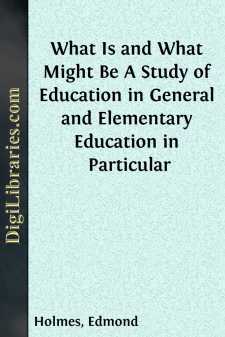Categories
- Antiques & Collectibles 13
- Architecture 36
- Art 48
- Bibles 22
- Biography & Autobiography 813
- Body, Mind & Spirit 142
- Business & Economics 28
- Children's Books 17
- Children's Fiction 14
- Computers 4
- Cooking 94
- Crafts & Hobbies 4
- Drama 346
- Education 46
- Family & Relationships 57
- Fiction 11829
- Games 19
- Gardening 17
- Health & Fitness 34
- History 1377
- House & Home 1
- Humor 147
- Juvenile Fiction 1873
- Juvenile Nonfiction 202
- Language Arts & Disciplines 88
- Law 16
- Literary Collections 686
- Literary Criticism 179
- Mathematics 13
- Medical 41
- Music 40
- Nature 179
- Non-Classifiable 1768
- Performing Arts 7
- Periodicals 1453
- Philosophy 64
- Photography 2
- Poetry 896
- Political Science 203
- Psychology 42
- Reference 154
- Religion 513
- Science 126
- Self-Help 84
- Social Science 81
- Sports & Recreation 34
- Study Aids 3
- Technology & Engineering 59
- Transportation 23
- Travel 463
- True Crime 29
Making a Lawn
Categories:
Description:
Excerpt
Making a Lawn
THE SMALL LAWN, OLD AND NEW
TO the thousands of anxious inquirers, seeking solution of lawn difficulties, it would be more than delightful to say that a fine lawn could be had by very hard wishing, but honesty compels one to change the words "hard wishing" to "hard work," in order to keep strictly within the truth. A well-made lawn is a testimonial to a hustler, whether the area is small or large.
The majority of inquiries about lawn needs come from people having small places, from a few hundred to a few thousand feet, and the symptoms described can be divided into two classes: one where they want to make grass grow where it has never grown before, and the other where the call is for information to assist in restoring old lawns that have petered out. Let us take up the last condition first.
Where grass has grown for some years it is conclusive evidence that there must be soil beneath, which, perhaps because of neglect, has ceased to supply the nourishment necessary to maintain the vigor of the sod growing upon it. As a consequence, weeds gradually creep in and finally crowd out every blade of grass.
A condition like this is easily remedied and an improvement brought about in short order and at very small expense.
In the first place make a general clearing up of the weeds and do it as thoroughly as possible. Take them out with a strong knife, cutting deep into the ground. An asparagus knife is the best for this purpose.
If the place under treatment were to be spaded up, this weed-cleaning with the knife would not be necessary, but the object in this instance is to disturb the soil as little as possible.
With the weeds out of the way, go over the whole place with a sharp rake and scratch the earth to the depth of half an inch. In doing this remember to be not too severe on spots where there is any grass growing, applying the rake lightly here. After the raking, sow grass seed thickly and evenly, raking it in, and finish by watering and rolling. Be sure to roll heavily, water regularly, and good results will surely come.
This, in brief, is the most practical way to treat the conditions described.
If, however, you should find that the ground shows patches of moss and sorrel, the treatment just suggested will not apply. The land is probably sour, and should be plowed up, limed, and allowed to lay rough all winter. Use about a bushel and a half of air-slaked lime to every thousand square feet.
When the object is to make a lawn where there never has been one, the plow or the spade is the most effective weapon.
It must be kept in mind that grass on a lawn is a great feeder, and no soil can be made too rich to supply its food requirements. A lawn is a permanent planting, not something that is to last merely for a season.
Here is an interesting and ingenious scheme of getting a path over the lawn without increasing the labor of cutting. The stepping-stones are set flush with the groundStart this work of preparation for a new lawn in the fall. Spade the land to the depth of two feet, or, better still, run a plow through it, if the size of the place warrants....












